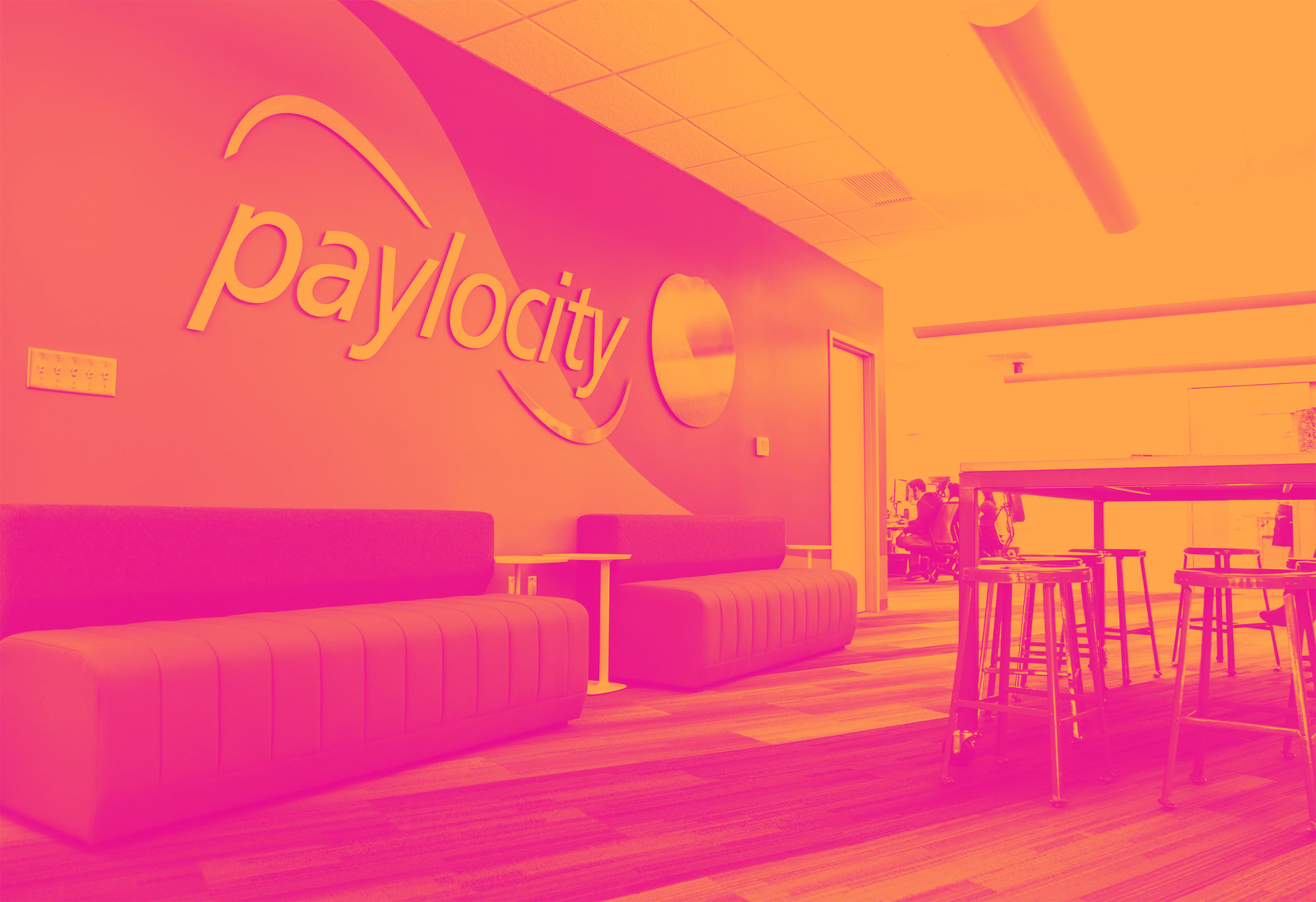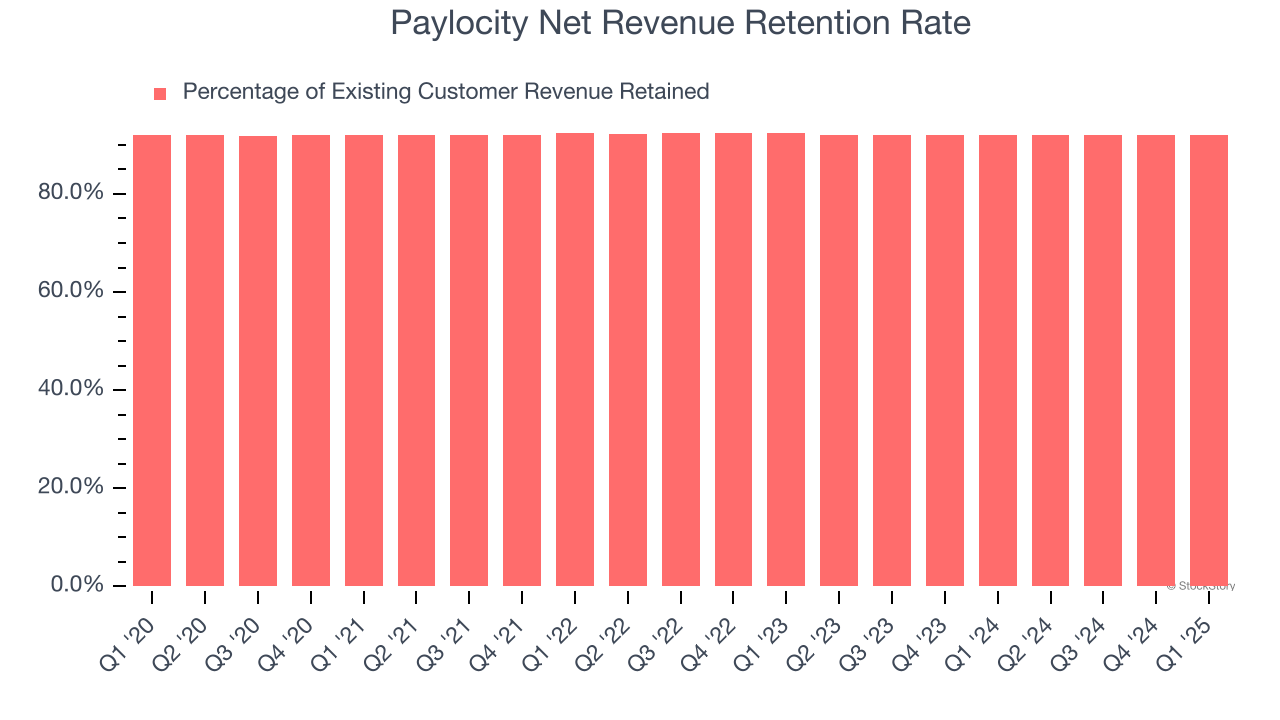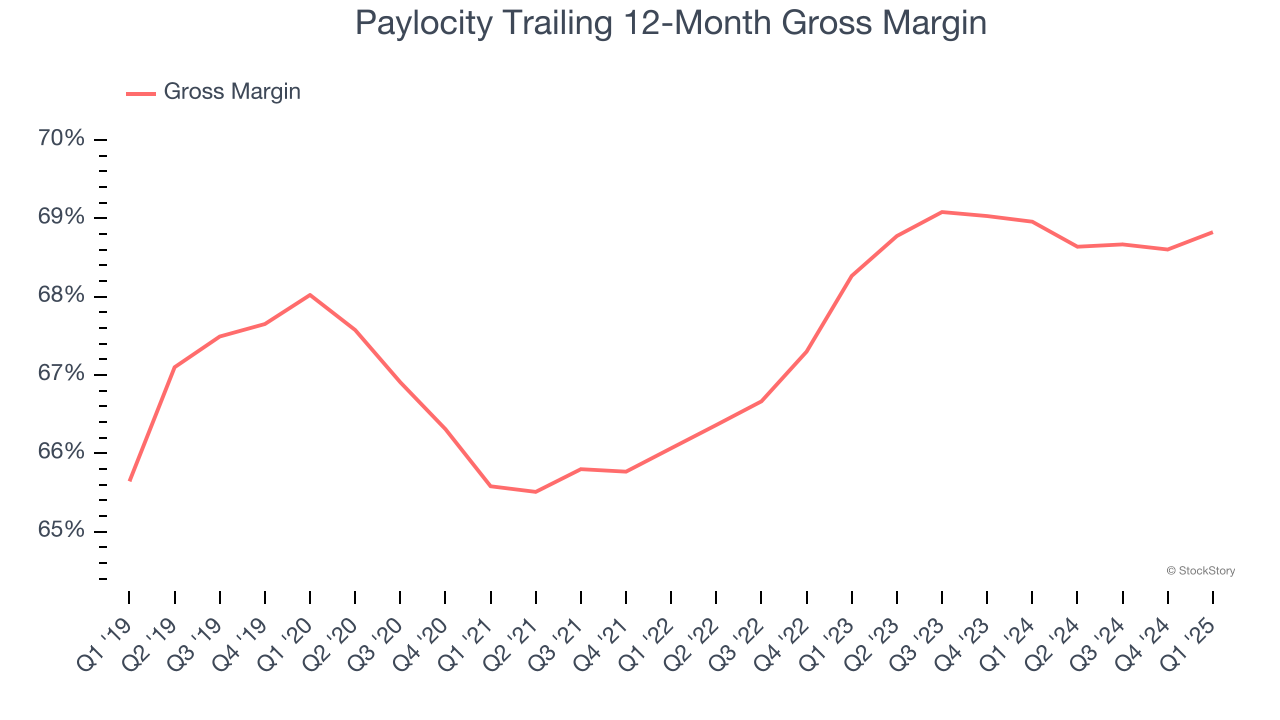
Over the last six months, Paylocity shares have sunk to $183.50, producing a disappointing 13.1% loss - worse than the S&P 500’s 6.2% drop. This may have investors wondering how to approach the situation.
Is now the time to buy Paylocity, or should you be careful about including it in your portfolio? Get the full stock story straight from our expert analysts, it’s free.
Why Is Paylocity Not Exciting?
Even though the stock has become cheaper, we're sitting this one out for now. Here are three reasons why there are better opportunities than PCTY and a stock we'd rather own.
1. Customer Churn Hurts Long-Term Outlook
One of the best parts about the software-as-a-service business model (and a reason why they trade at high valuation multiples) is that customers typically spend more on a company’s products and services over time.
Paylocity’s net revenue retention rate, a key performance metric measuring how much money existing customers from a year ago are spending today, was 92% in Q1. This means Paylocity’s revenue would’ve decreased by 8% over the last 12 months if it didn’t win any new customers.

Paylocity has a poor net retention rate, warning us that its customers are churning and that its products might not live up to expectations.
2. Projected Revenue Growth Is Slim
Forecasted revenues by Wall Street analysts signal a company’s potential. Predictions may not always be accurate, but accelerating growth typically boosts valuation multiples and stock prices while slowing growth does the opposite.
Over the next 12 months, sell-side analysts expect Paylocity’s revenue to rise by 8.7%, a deceleration versus its 25.2% annualized growth for the past three years. This projection doesn't excite us and implies its products and services will face some demand challenges.
3. Low Gross Margin Hinders Flexibility
For software companies like Paylocity, gross profit tells us how much money remains after paying for the base cost of products and services (typically servers, licenses, and certain personnel). These costs are usually low as a percentage of revenue, explaining why software is more lucrative than other sectors.
Paylocity’s gross margin is slightly below the average software company, giving it less room than its competitors to invest in areas such as product and sales. As you can see below, it averaged a 68.8% gross margin over the last year. Said differently, Paylocity had to pay a chunky $31.17 to its service providers for every $100 in revenue. 
Final Judgment
Paylocity isn’t a terrible business, but it doesn’t pass our bar. Following the recent decline, the stock trades at 6.2× forward price-to-sales (or $183.50 per share). Beauty is in the eye of the beholder, but our analysis shows the upside isn’t great compared to the potential downside. We're pretty confident there are superior stocks to buy right now. We’d suggest looking at our favorite semiconductor picks and shovels play.
Stocks That Overcame Trump’s 2018 Tariffs
Market indices reached historic highs following Donald Trump’s presidential victory in November 2024, but the outlook for 2025 is clouded by new trade policies that could impact business confidence and growth.
While this has caused many investors to adopt a "fearful" wait-and-see approach, we’re leaning into our best ideas that can grow regardless of the political or macroeconomic climate. Take advantage of Mr. Market by checking out our Top 5 Strong Momentum Stocks for this week. This is a curated list of our High Quality stocks that have generated a market-beating return of 175% over the last five years.
Stocks that made our list in 2019 include now familiar names such as Nvidia (+2,183% between December 2019 and December 2024) as well as under-the-radar businesses like Comfort Systems (+751% five-year return). Find your next big winner with StockStory today.
